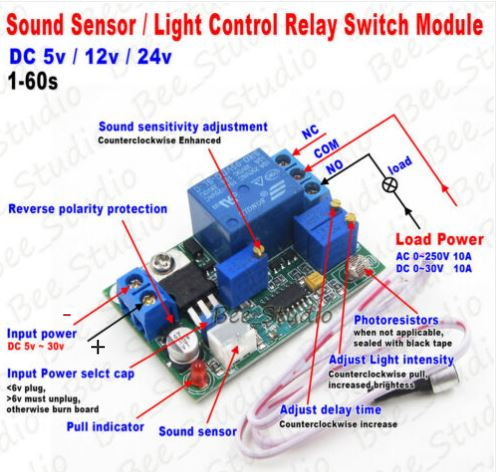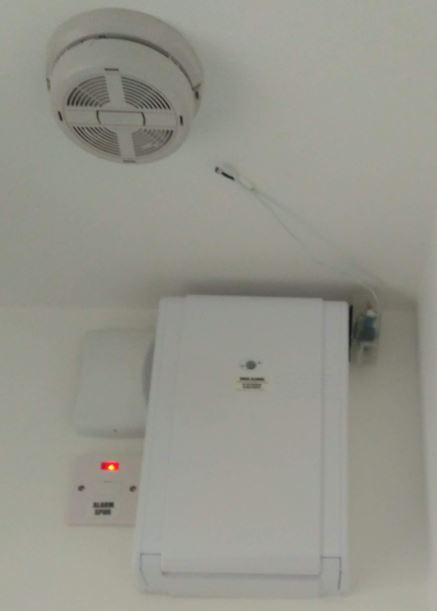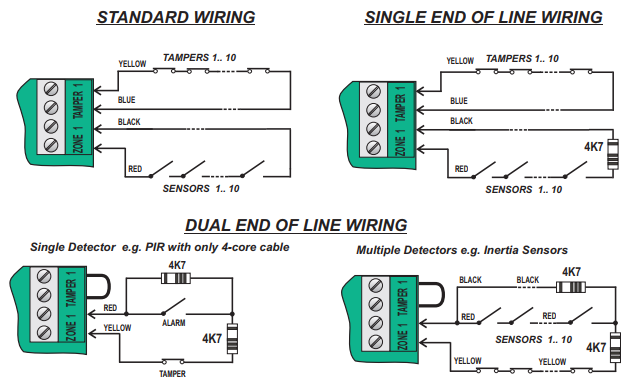Connecting smoke detectors to house alarm
-
Seems like only way to be sure is to test it with canned smoke or similar. If there's a way for a smoke detector to automatically test itself without that, then that would be awesome. The Nest Protect says it tests itself 400 times a day, but as I wrote earlier: what does that really mean? For instance, only just that it can communicate with the sensor? If so, that would be a pretty weak test. Ideally you'd like to know that the sensor is actually working as intended and able to detect smoke in accordance with its specs. Maybe by detecting dust particles in the air it would have some insight into whether it's functioning or not? So, maybe a particle detector would make a superior smoke detector? It probably would have to run off of mains power though.
@NeverDie
Please note that below is just my simple view on sensors of any type.
I think any sensor exposed to environment will need some type or form of maintenance/cleaning or replacement. I also do not think that sensor can test itself unless there is other sensor of different type/technology monitoring other sensor.
As you mentioned previously true way to test sensors is using smoke can from time to time as dust particles/moisture/grease may affect sensors of different types. -
Seems like only way to be sure is to test it with canned smoke or similar. If there's a way for a smoke detector to automatically test itself without that, then that would be awesome. The Nest Protect says it tests itself 400 times a day, but as I wrote earlier: what does that really mean? For instance, only just that it can communicate with the sensor? If so, that would be a pretty weak test. Ideally you'd like to know that the sensor is actually working as intended and able to detect smoke in accordance with its specs. Maybe by detecting dust particles in the air it would have some insight into whether it's functioning or not? So, maybe a particle detector would make a superior smoke detector? It probably would have to run off of mains power though.
@NeverDie
Received sound relay switch and connected to my alarm aux power in parallel with pir to supply power, added 100mA fuse on positive dc cable to prevent module making any problems with alarm panel but not sure if i was supposed to do it on negative dc wire.

Connected Normally Closed circuit to relay Com and NC contacts and adjusted sensitivity of microphone and time. Microphone is sensitive to claps but in my case it has to be a loud hand clap to trigger it. It has status led that shows when relay is activated so I can see if it is working on my monthly sensor checks.
Looking at my original intentions I am not 100% there as I am relying on single smoke sensor and its speaker. I think I will wait a few years and maybe something will come up that has relay (not relying on internet) but in the meantime I am happy to have something working and have some peace when I am away knowing that something is monitoring it (ordered same relay module for backup).

Have a good weekend
-
@NeverDie
Received sound relay switch and connected to my alarm aux power in parallel with pir to supply power, added 100mA fuse on positive dc cable to prevent module making any problems with alarm panel but not sure if i was supposed to do it on negative dc wire.

Connected Normally Closed circuit to relay Com and NC contacts and adjusted sensitivity of microphone and time. Microphone is sensitive to claps but in my case it has to be a loud hand clap to trigger it. It has status led that shows when relay is activated so I can see if it is working on my monthly sensor checks.
Looking at my original intentions I am not 100% there as I am relying on single smoke sensor and its speaker. I think I will wait a few years and maybe something will come up that has relay (not relying on internet) but in the meantime I am happy to have something working and have some peace when I am away knowing that something is monitoring it (ordered same relay module for backup).

Have a good weekend
@vecnar If I'm understanding right, your device listens for a loud sound and then triggers on that and only that. So, then the tradeoffs are you want to set the threshold low enough that it triggers whenever the alarm siren sounds, but high enough that it doesn't trigger on false events, like a car honking in the distance or possibly someone dropping something on the floor or a baby crying. Well, I imagine that would work, though you might get occasional false positives. If your device could be dialed in to only trigger on sustained loud noise, rather than bursty noise, it might cut-out the false positive of someone dropping a vase on the floor, or the like. One thing to possibly be wary of is whether there's drift in the sound threshold over time or temperature of the components in your detection device.
Depending on how your alarm sounds, you could maybe improve on that. For instance, if it has some kind of repeating on-off-on-off pattern to the siren, then you could program an arduino to listen for that pattern specifically, instead of just purely level of loudness. I'd wager that would be quite accurate at triggering if and only if your smoke alarm sounds. Otherwise, there are projects out there where you can allegedly "teach" a sensor to identify your particular alarm's sounds.using classifiers. I happened to notice such a project was published just a few days ago: https://www.hackster.io/news/sandeep-mistry-walks-through-tinyml-audio-classification-using-tensorflow-lite-raspberry-pi-rp2040-f4065b654565
-
@vecnar If I'm understanding right, your device listens for a loud sound and then triggers on that and only that. So, then the tradeoffs are you want to set the threshold low enough that it triggers whenever the alarm siren sounds, but high enough that it doesn't trigger on false events, like a car honking in the distance or possibly someone dropping something on the floor or a baby crying. Well, I imagine that would work, though you might get occasional false positives. If your device could be dialed in to only trigger on sustained loud noise, rather than bursty noise, it might cut-out the false positive of someone dropping a vase on the floor, or the like. One thing to possibly be wary of is whether there's drift in the sound threshold over time or temperature of the components in your detection device.
Depending on how your alarm sounds, you could maybe improve on that. For instance, if it has some kind of repeating on-off-on-off pattern to the siren, then you could program an arduino to listen for that pattern specifically, instead of just purely level of loudness. I'd wager that would be quite accurate at triggering if and only if your smoke alarm sounds. Otherwise, there are projects out there where you can allegedly "teach" a sensor to identify your particular alarm's sounds.using classifiers. I happened to notice such a project was published just a few days ago: https://www.hackster.io/news/sandeep-mistry-walks-through-tinyml-audio-classification-using-tensorflow-lite-raspberry-pi-rp2040-f4065b654565
@NeverDie It is located in the center of the house in the room with with the doors and microphone positioned close to smoke alarm to detect noise. It is very unlikely to be triggered by anything from outside or by neighbors and it doesn't pickup low frequency noise. It only activates alarm if we set it, so nobody is at home at that time and at night time i excluded alarm zone that is connected to sound detector.
I positioned ip camera to monitor status led and it hasn't set itself while we were inside either. So I am happy with its accuracy but as per your advice I will monitor its accuracy at different temperature ranges.
Thank you for suggesting Arduino project to try, hopefully someone will benefit from them but in my view this just adds unnecessary layer of complexity and doesn't benefit my setup. -
@NeverDie It is located in the center of the house in the room with with the doors and microphone positioned close to smoke alarm to detect noise. It is very unlikely to be triggered by anything from outside or by neighbors and it doesn't pickup low frequency noise. It only activates alarm if we set it, so nobody is at home at that time and at night time i excluded alarm zone that is connected to sound detector.
I positioned ip camera to monitor status led and it hasn't set itself while we were inside either. So I am happy with its accuracy but as per your advice I will monitor its accuracy at different temperature ranges.
Thank you for suggesting Arduino project to try, hopefully someone will benefit from them but in my view this just adds unnecessary layer of complexity and doesn't benefit my setup.@vecnar :+1: Nice job! I think that I too will mostly stick with my current smoke alarm setup until either prices on the Nest drop to parity levels or something better comes along. Kinda the "if it isn't broken, don't fix it" philosophy. If it turns out that de-dusting my smoke alarms on a regular basis provides 100% anti-false alarm protection, then I may never feel the need to upgrade at all. Meanwhile, I think I will replace my ionizing smoke alarms with photoelectric ones, since photoelectric smokes alarms are thought to have many fewer false alarms.
-
@NeverDie It is located in the center of the house in the room with with the doors and microphone positioned close to smoke alarm to detect noise. It is very unlikely to be triggered by anything from outside or by neighbors and it doesn't pickup low frequency noise. It only activates alarm if we set it, so nobody is at home at that time and at night time i excluded alarm zone that is connected to sound detector.
I positioned ip camera to monitor status led and it hasn't set itself while we were inside either. So I am happy with its accuracy but as per your advice I will monitor its accuracy at different temperature ranges.
Thank you for suggesting Arduino project to try, hopefully someone will benefit from them but in my view this just adds unnecessary layer of complexity and doesn't benefit my setup.@vecnar Epilog: I just now had to replace a couple of the BRK carbon monoxide / smoke alarms because they began their 7-year end-of-life chirp (5 very loud beeps that sound for every frickin minute that passes, I guess just to be sure you drop whatever you're doing and attend to it immediately :rolling_on_the_floor_laughing: ). Anyhow, two nice surprises: 1. the replacements now cost less than the originals did, and 2. the replacement CO sensors are upgraded to last 10 years instead of only 7. So, considering BRK could have us over a barrel because of vendor lock-in, those were pleasant surprises. :smiley:
-
Anyhow, I would say that probably everyone should watch the following youtube video, because in all likelihood, your CO detector isn't working the way you might think or imagine or hope that it is. Also, it turns out there's a strong argument for supplementing the kind of CO detectors in your house that are demanded by building code with at least one additional low-level CO detector (all of which, it turns out, will not be UL listed, because of somewhat peculiar government rules that are in play) :
https://www.youtube.com/watch?v=e_R9NaTRVFEi.e. when it comes to carbon monoxide detectors, being UL listed probably doesn't mean what you think it would, or should, mean. i.e. the very meaning of "UL Listed" for carbon monoxide detectors is different than what it typically is with other electrical or electronic devices.
-
@vecnar Epilog: I just now had to replace a couple of the BRK carbon monoxide / smoke alarms because they began their 7-year end-of-life chirp (5 very loud beeps that sound for every frickin minute that passes, I guess just to be sure you drop whatever you're doing and attend to it immediately :rolling_on_the_floor_laughing: ). Anyhow, two nice surprises: 1. the replacements now cost less than the originals did, and 2. the replacement CO sensors are upgraded to last 10 years instead of only 7. So, considering BRK could have us over a barrel because of vendor lock-in, those were pleasant surprises. :smiley:
@NeverDie
I am sure it wasn't a pleasant experience and i hope it wasn't at night. Great that they do have better and cheaper replacement and no need to move to different manufacturer. It is not the case for me as BRK left Europe but i hope to start looking in a few years hopefully, if they last.
Thank you for sharing video about carbon monoxide. I will pass it on to my friends that have gas boilers/fireplaces. I personally do not have any and all is electrical but I may get one in case surrounding houses produce too much and it gets inside our house.
I am sure you will get at least one low level co for your house, let me know which one will you go for and your findings. I did a quick search to see if any available in europe and one has digital meter "Fireangle CO-9d" and Product Manual
I think this if the information that may be important but to me it looks like to meet some standards but it has display which shows levels and has past 4 weeks worst level also, or so i understood.Between 60 and 90 minutes when exposed to a minimum of 50ppm of CO. • Between 10 and 40 minutes when exposed to a minimum of 100ppm of CO. • Within 3 minutes when exposed to a minimum of 300ppm of CO. -
Well, since you ask, I've been using this model as a low-level CO detector for around 20 years: https://www.kidde.com/home-safety/en/us/products/fire-safety/co-alarms/kn-copp-3/
That because, at least at the beginning, it was one of the few that had a digital display showing the CO level. These days, there are more models which have that. It would be interesting to make a low-level mysensor CO detector/sensor. -
Well, since you ask, I've been using this model as a low-level CO detector for around 20 years: https://www.kidde.com/home-safety/en/us/products/fire-safety/co-alarms/kn-copp-3/
That because, at least at the beginning, it was one of the few that had a digital display showing the CO level. These days, there are more models which have that. It would be interesting to make a low-level mysensor CO detector/sensor.@NeverDie Just to clarify: not the same sensor (obviously, since they degrade with age), but the same model sensor. It's sensitive enough to detect CO in a garage and show a reading after a car starts its engine. I can't say how accurate it is, but it does manage to detect, and it displays a steady declining CO measurement after the car has left the garage.
-
Well, since you ask, I've been using this model as a low-level CO detector for around 20 years: https://www.kidde.com/home-safety/en/us/products/fire-safety/co-alarms/kn-copp-3/
That because, at least at the beginning, it was one of the few that had a digital display showing the CO level. These days, there are more models which have that. It would be interesting to make a low-level mysensor CO detector/sensor.@NeverDie Thank you for sharing the device you use. I am based in eu and 240 V ac and I think i will just pick one with lcd that can show the highest range even without sounding alarm. Just to check if it is of any concern to me.
My wife got candy canes, 7 sets 2xAA battery operated modules containing 40 leds each and i am trying to find a way to power them and wire them to one power source. Reading online it looks to be over complicated with so many things to calculate. This is just a side not not relevant to this post and the reason i didn't reply to your posts.

